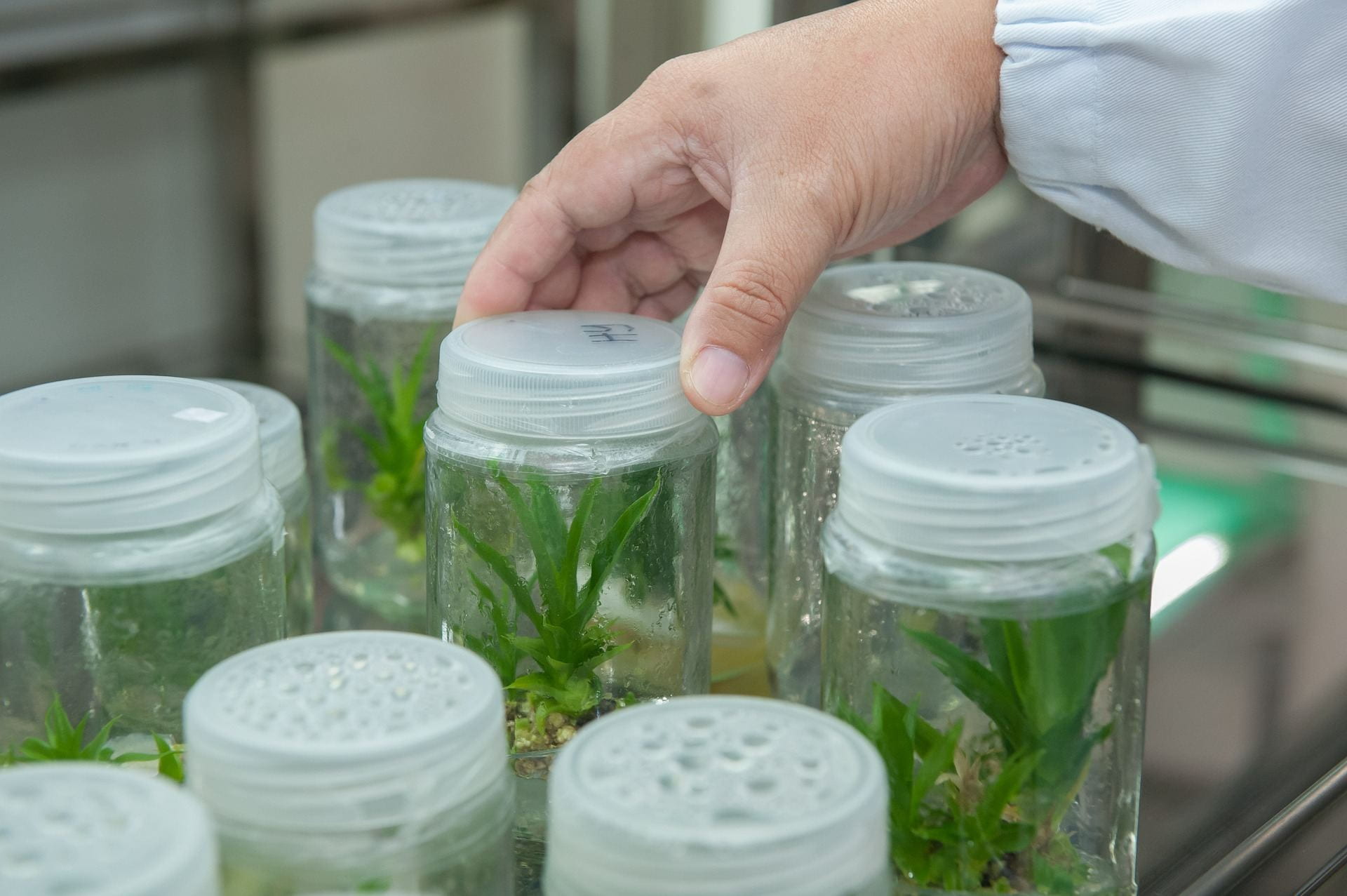This post was written by ScIU Undergraduate Intern Rose Schnabel.
A trip to Walt Disney World includes popcorn, fireworks, and…genetic engineering? As discussed in a previous ScIU post, Disney attractions are full of surprising science, like illusions in the Haunted Mansion and electron movement in firework shows, but perhaps the most interesting example is the biotechnology at work in the Living with the Land attraction at EPCOT.

In 1982, Disney debuted Listen to the Land, a slow-moving boat ride through agricultural vignettes that culminated in a visit to sprawling greenhouses that provided a peek at Disney’s biotechnology labs. Inside, scientists in white lab coats pipetted and plated dozens of samples. The September 1989 issue of Agricultural Research magazine put it plainly: “ten million people a year now get a close-up look at tissue culture and biotechnology in action.”
The lab, launched as a partnership between Walt Disney World, Kraft, and the USDA’s Agricultural Research Service (ARS), now operates as a branch of the Functional Genomics and Breeding Research Unit under the ARS. Since its conception, the lab has focused on improving the durability, yield, and disease resistance of crops, especially fruit trees. Researchers do so through tissue culture and cloning, two popular techniques in molecular biology that allow scientists to test different genetic modifications.
Tissue culture, also known as micropropagation, is a process that uses a cell or part of an organ to grow tissue in an artificial environment. For plants, tissue samples are cut or scraped from the parent plant and placed onto a solid or liquid growth medium. The medium contains vitamins, nitrogen, and plant growth hormones in various quantities according to the needs of the organism. Over a period of a few days or weeks, samples develop into tiny plantlets and can be transplanted into normal soil. This technique is especially useful for creating large numbers of plants or for propagating species that are difficult to grow from seed.

Cloning, on the other hand, allows scientists to selectively silence, modify, or insert genes within an organism. It consists of three parts: digestion, ligation, and transformation. First, a circular loop of DNA called a plasmid is removed from a bacterial cell. These plasmids function as the carriers of the target gene; they are how the gene “breaks in” to the cell that will be transformed. Simultaneously, double-stranded DNA with the target gene is isolated from its cells. During digestion, molecules called restriction enzymes find specific sites on both the plasmid and the target DNA and cut them, creating single-stranded overhangs called sticky ends. The process of ligation is like an arts and crafts project; the sticky ends of the plasmid and target DNA find each other and adhere, creating a new circular loop called a recombinant plasmid. Finally, through the process of transformation, cells absorb the recombinant plasmid and begin to express the target gene. As these transformed cells reproduce, their modified genome causes them to behave differently than the wild type cells (i.e., the typical form of the cells that occurs in nature). The goal of researchers at the EPCOT laboratory is to create plant cells that are stronger, more resilient, and more productive than their unmodified counterparts.
But, these two techniques aren’t immune to critique. In fact, Disney’s biotechnology lab has been criticized since its opening day by those who oppose genetic modification. A 2007 project of the laboratory aimed to produce a shorter variety of pear trees, making them easier to harvest and, thus, more commercially attractive. The Orlando Sentinel reported pushback on the project from political activists and non-profit leaders, who cautioned against moving too quickly. “There just is no way to know what is going to happen in the long term,” said the co-director of the Global Justice Ecology Project, “even for the growers.”
As crop modification, genetic engineering, and genome editing have become more common, some of the criticism has subsided. More than 93% of corn and soybeans grown in the U.S. have been genetically modified in some way. Disney’s biotechnology lab aims to educate the public on the extreme care that goes into overseeing genetic modification and other agricultural research techniques. An October 2021 job posting, for example, emphasized that researchers at the attraction need an extensive background in genetics and biotechnology research techniques, but also “skill in oral and written communication in order to lead tours of the facilities and explain basic biotechnology concepts to visitors.”

With these experimental and educational efforts, Disney’s biotechnology lab positions itself as a center for innovation, exploration, and inspiration. From the first boat of guests in 1982 to those on the ride right now, everyone is sure to learn something from the plants, animals, and people at Living with the Land.
Acknowledgements:
I’d like to thank Chloe Holden and Kat Munley for their guidance throughout my ScIU social media internship.
References:
Kaplan, J. K. (1989, September). World’s friendliest biotechnology lab. Agricultural Research, 37(9), 8-9.
Edited by Jennifer Sieben and Evan Arnet

Leave a Reply